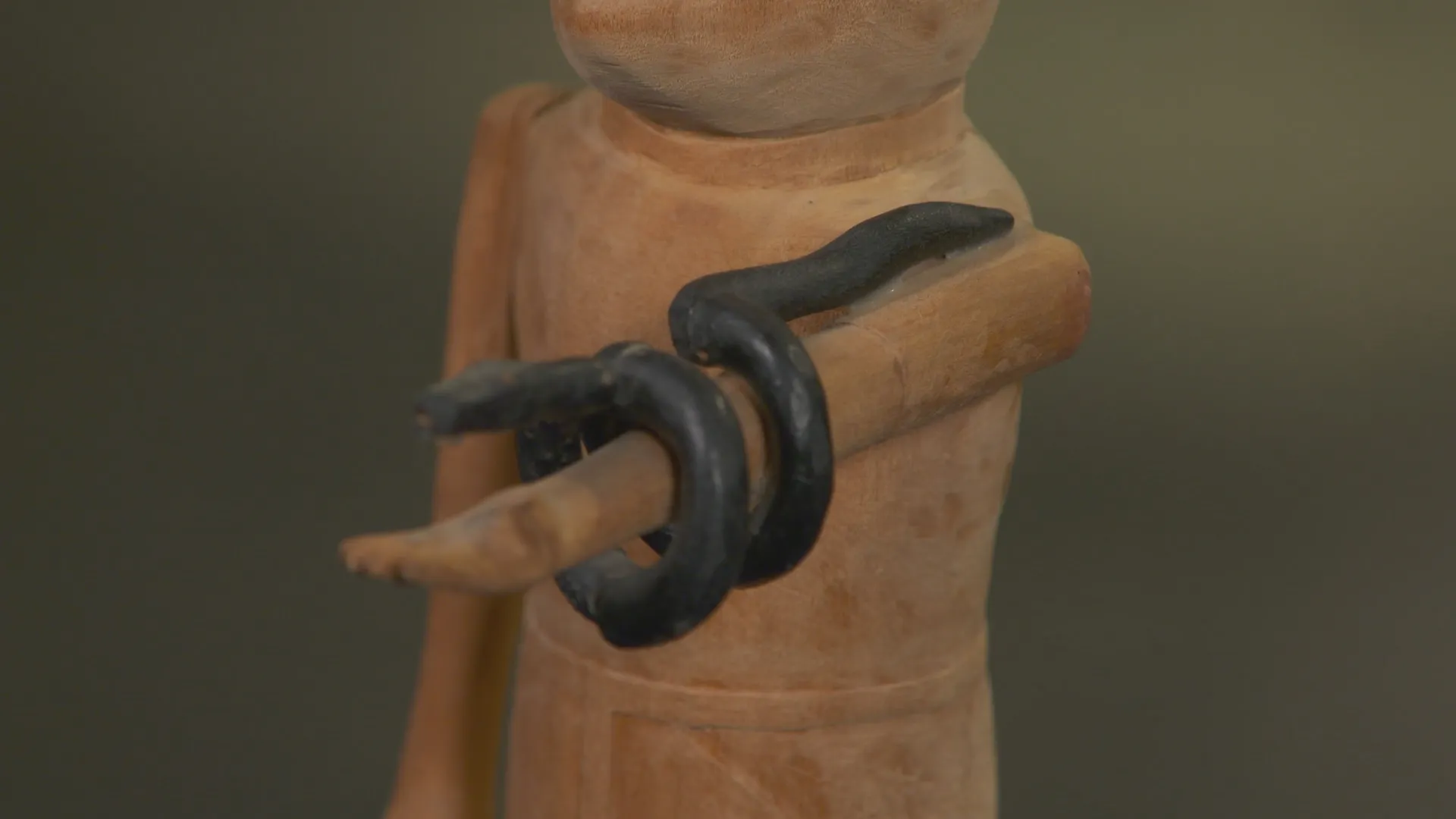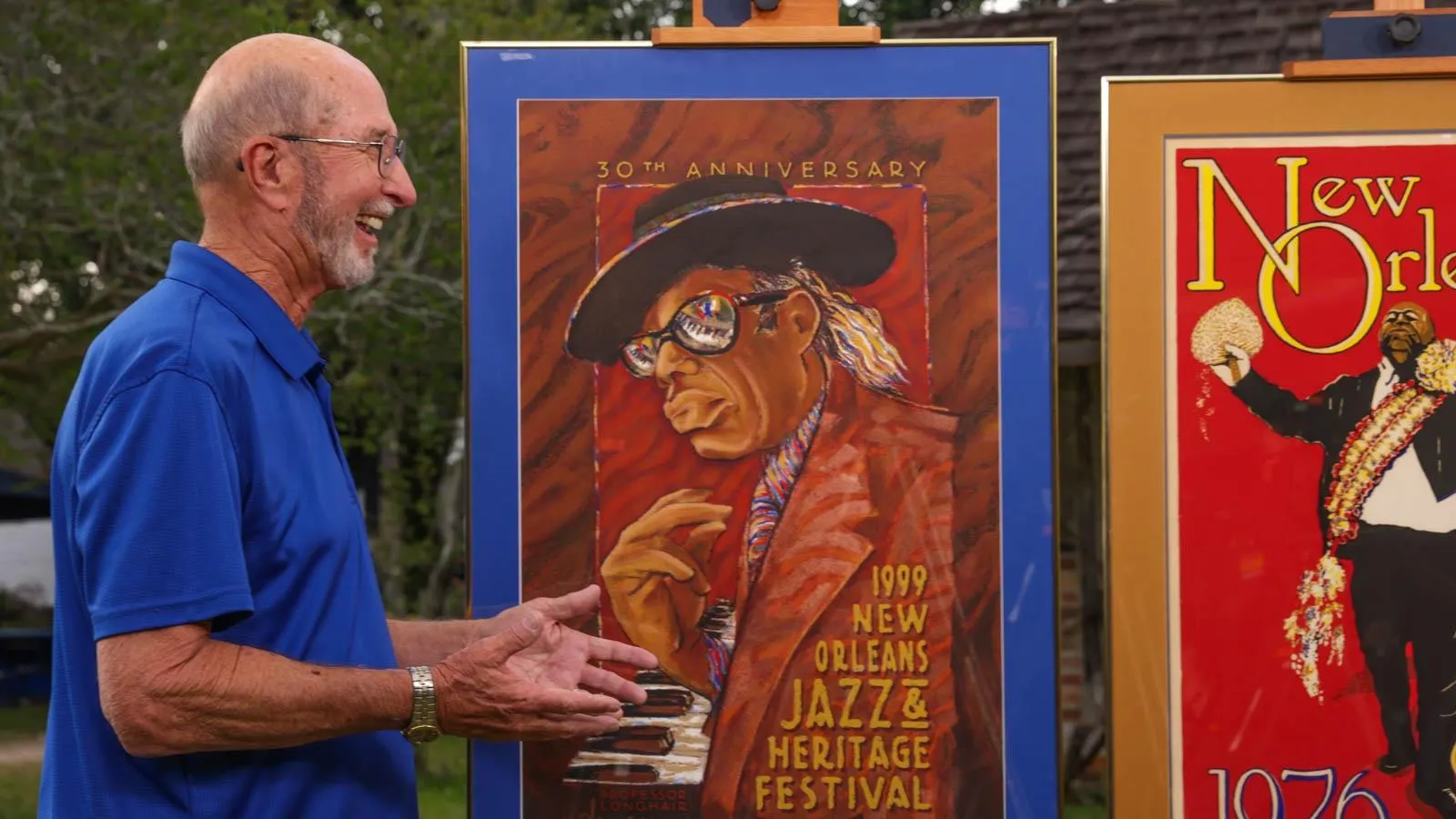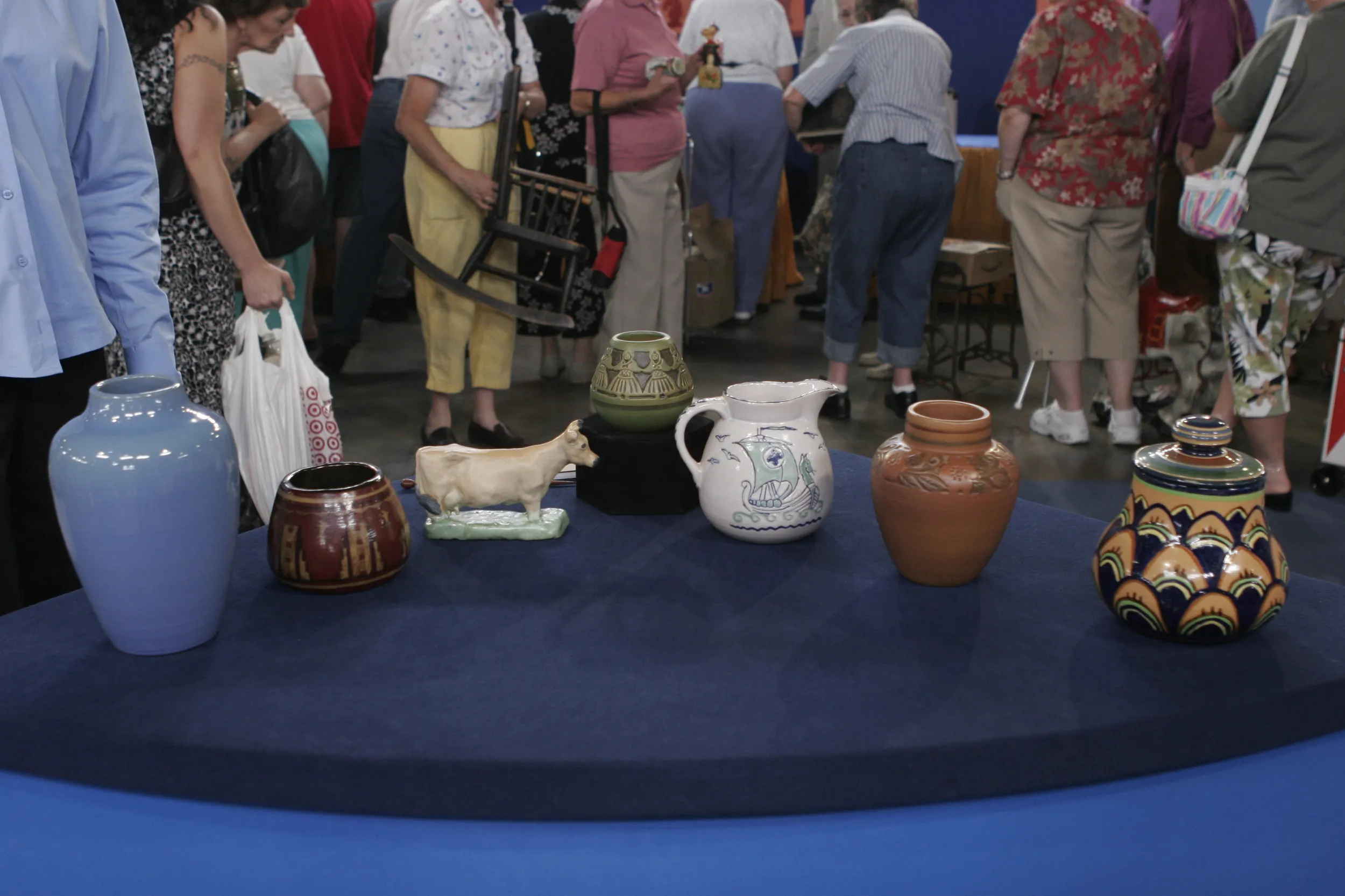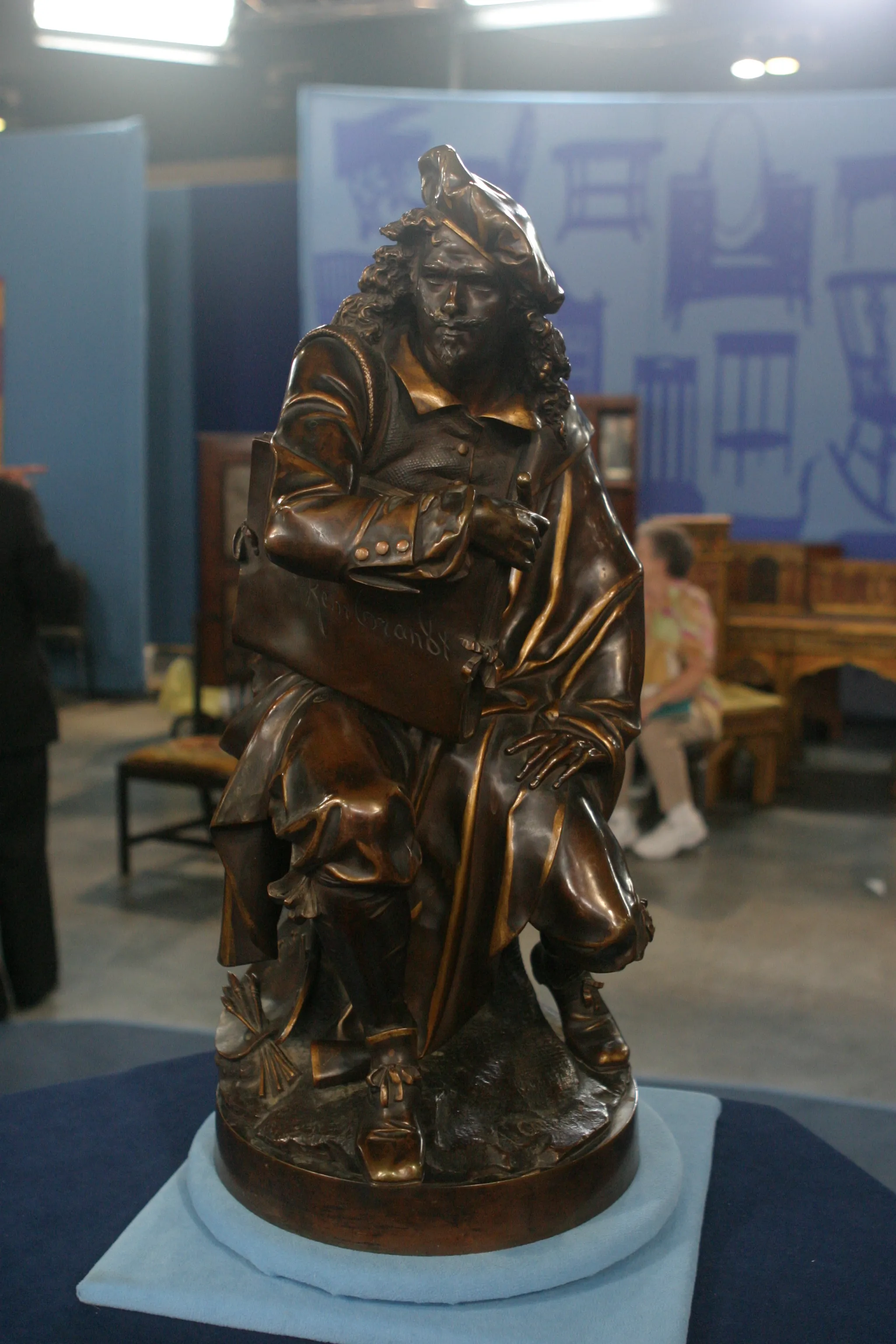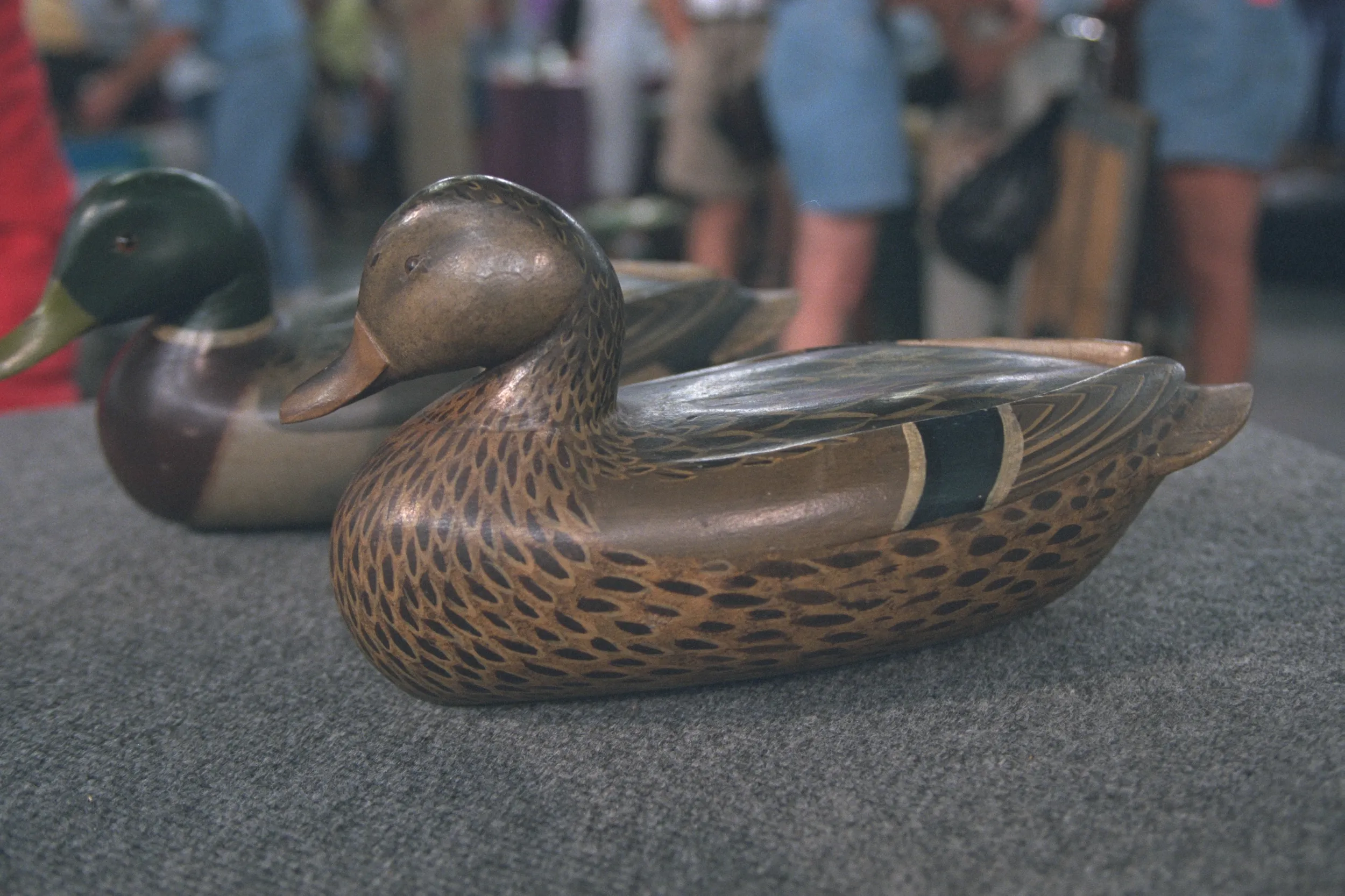GUEST: I brought in a wooden figure that belonged to my mother-in-law, and she and her husband-- she was from Kentucky-- and they went back to Kentucky one summer, and she said they went through the woods and the hills and the hollers, looking for this particular artist who did wood carvings. So they found him, they purchased this, brought it back, and that's the end of the story. That's all I knew about it.
APPRAISER: And you inherited this?
GUEST: And I inherited it after she passed away, and it's been sitting on my shelf.
APPRAISER: Well, we know the carver.
GUEST: Oh!
APPRAISER: Uh, we do.
GUEST: Oh, okay.
APPRAISER: (chuckles) Although not signed...
GUEST: Mm-hmm.
APPRAISER: ...his work is so distinguishable that when you see it, you know exactly who the artist is.
GUEST: Okay.
APPRAISER: It's by a gentleman by the name of Edgar Tolson.
GUEST: Oh, okay.
APPRAISER: And he was born in Kentucky, he passed away in Kentucky. He was born in the early part of the 20th century and passed away in 1984.
GUEST: Okay, that makes sense. Mm-hmm.
APPRAISER: Yeah, so it was probably 40 years ago, at least...
GUEST: Mm-hmm, yes, yes.
APPRAISER: ...when they purchased this. Now, Tolson lived in Appalachia.
GUEST: Mm-hmm.
APPRAISER: In the mountains of Kentucky, and he was a coal miner, he was a farmer, he made chairs, and he was a Baptist minister.
GUEST: Oh, okay.
APPRAISER: And that's the segue into this carving.
GUEST: Very good.
APPRAISER: Because he left being a preacher, because he said he could not live up to God's standards. But yet all of his carvings, his large body of
work, is all with biblical figures.
GUEST: Sym, the symbolism, gotcha.
APPRAISER: And when we see the snake, we know who this guy is-- this is Adam in the Garden of Eden.
GUEST: I'll be darned.
APPRAISER: As we turn it, we see this completely reductive carving. That he didn't feel there was a need to embellish it, put a lot of detail onto it,
and it's just very simple, very plain, but also, in a way, it makes it more powerful.
GUEST: Mm-hmm.
APPRAISER: And more elegant. Very highly collected. People became aware of his work in the 1960s.
GUEST: Okay.
APPRAISER: And what was going on in the '60s in Appalachia is, were artist guilds. There were these craft guilds in order to support local artisans.
They were co-ops where artists would bring their work, and Tolson brought his work there.
GUEST: Hm.
APPRAISER: He got noticed, and he kind of rose to the top of the class. Eventually did demonstrations at the Smithsonian.
GUEST: Wow.
APPRAISER: And had a full, interesting life of talking about his carvings and, and creating a large body of work. There's a small little h, pinhole right
at the mouth of the snake, and there would have been a little piece of metal that came out, for the snake's tongue. The little base it's on is a piece of
pine. The wood itself that he carved out of is typically basswood. What do you think it's worth?
GUEST: Oh, gosh. Maybe $250?
APPRAISER: Okay, that's, uh, a guess.
GUEST: Yeah.
APPRAISER: Today's market, $2,000 to $3,000.
GUEST: (gasps): You are kidding me.
APPRAISER: No, I'm not.
GUEST: Oh, get... (laughs)
APPRAISER: And it's a very sophisticated market for his material.
GUEST: (gasps) Seriously?
APPRAISER: Yeah. And intuitively, you knew to bring it today.
GUEST: Well, it was, you know, it was, like, "What is it?" "I have no idea." "Well, let's just take it"-- that kind of thing.
APPRAISER: Yeah.
GUEST: You know? And I, I said, "It's broken. They're going to say it's not worth anything, it's broken."

